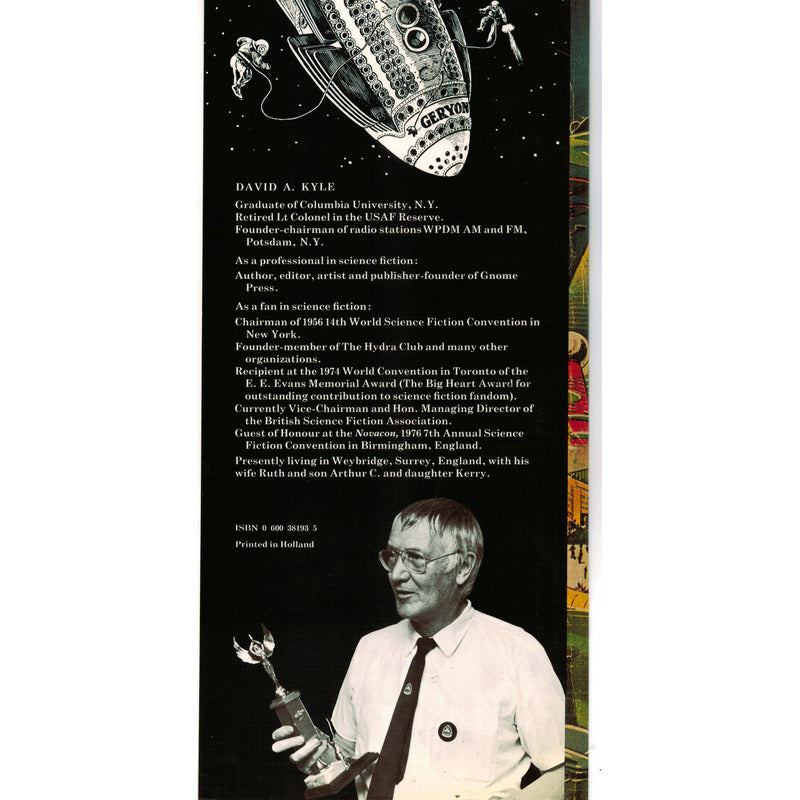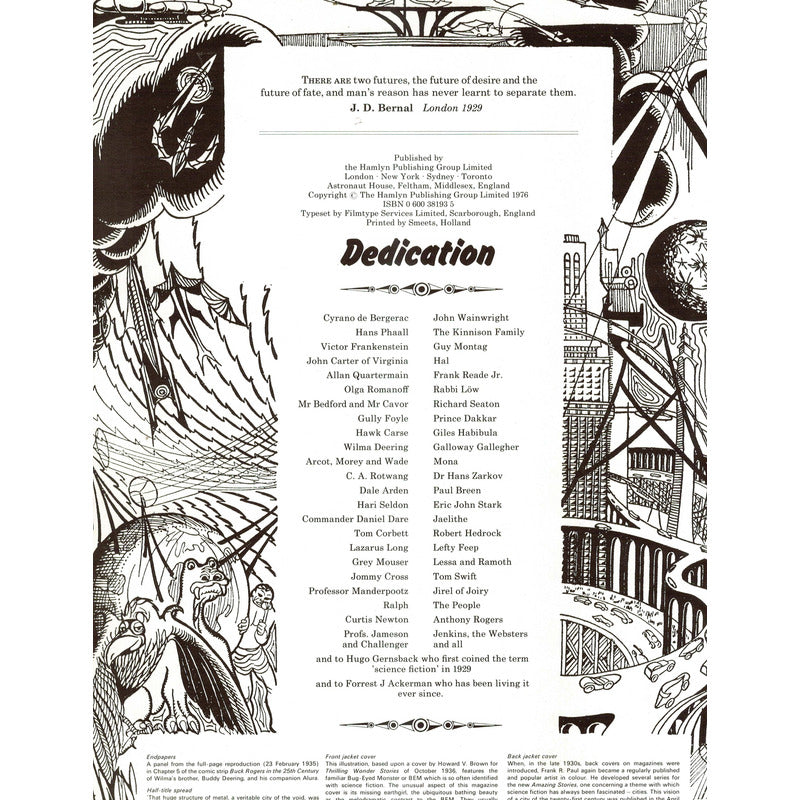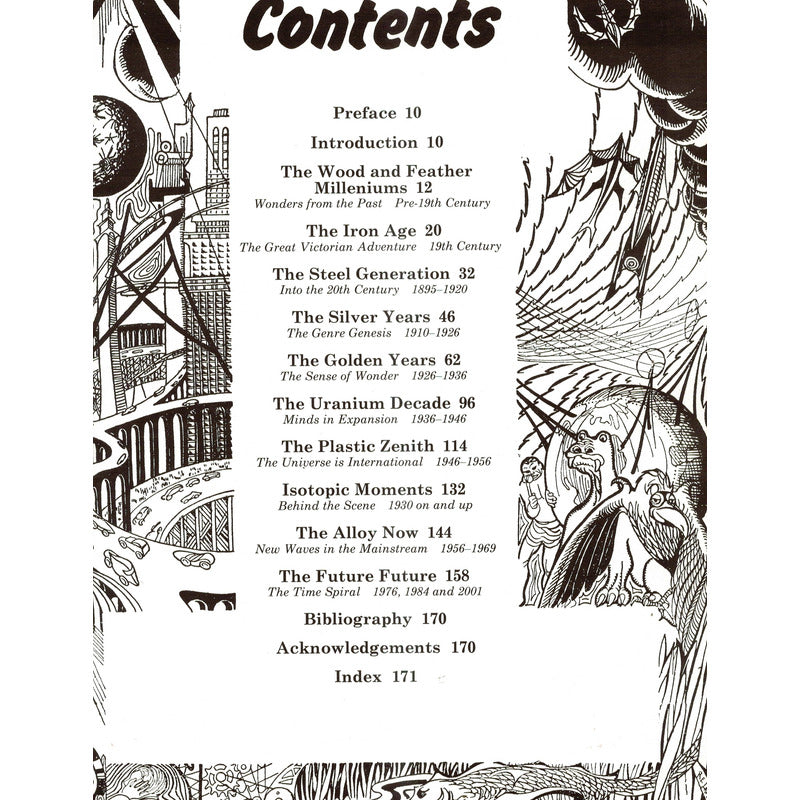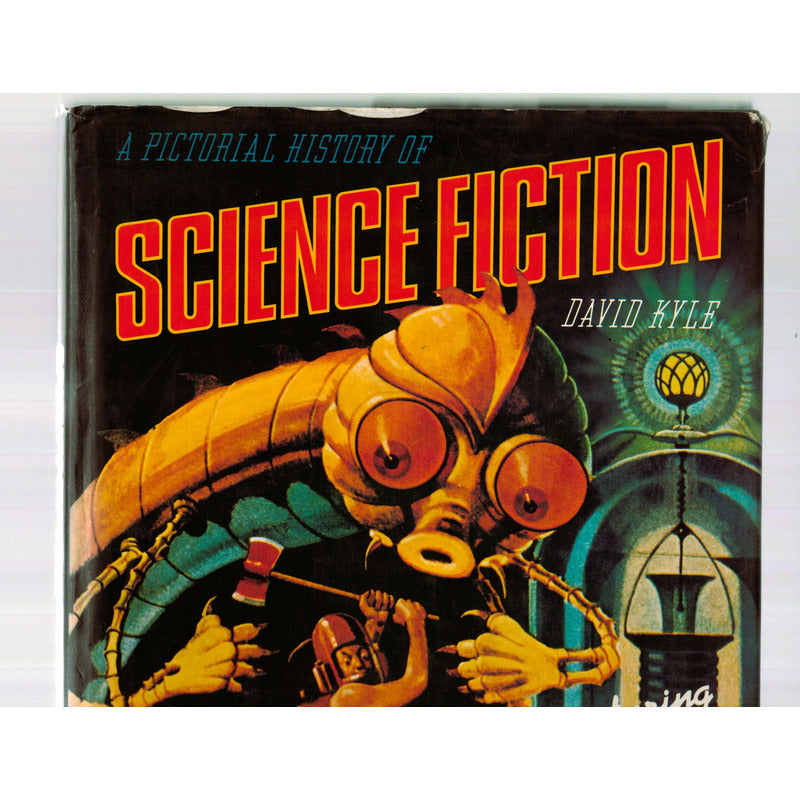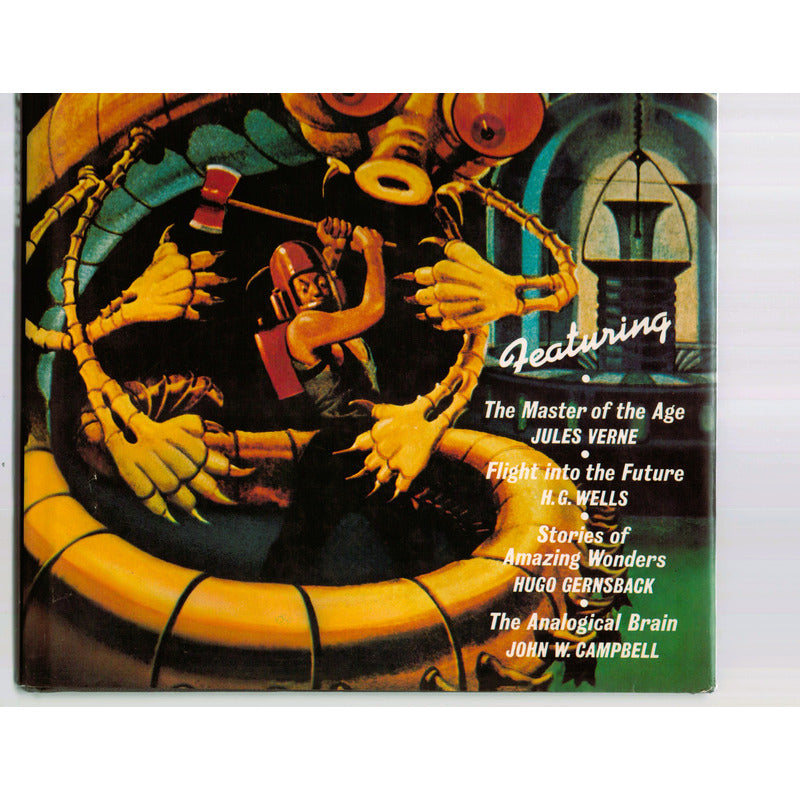Ir directamente a la información del producto
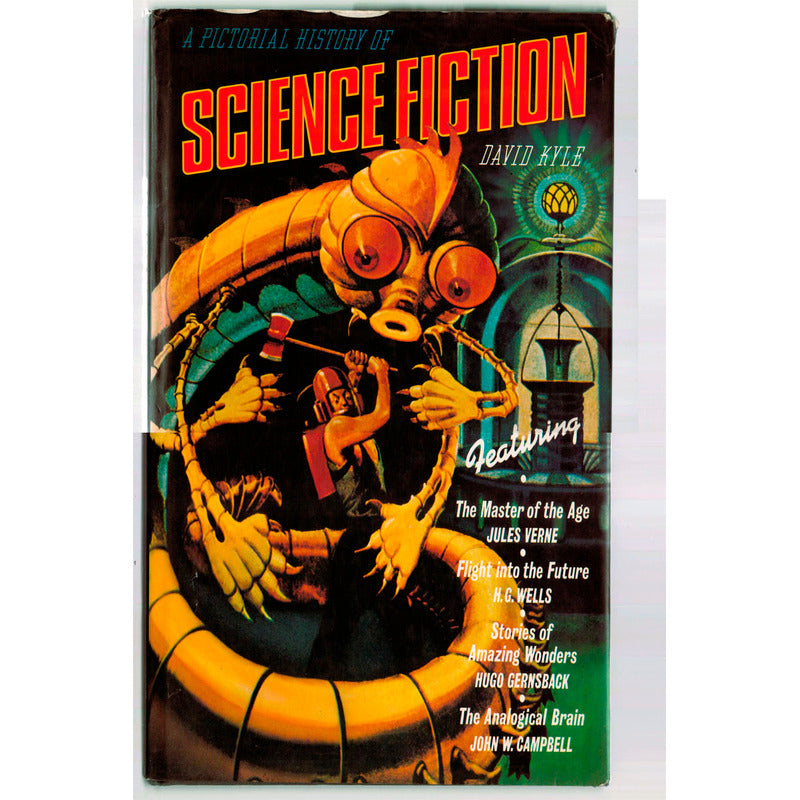
Es marca destacada: No
Autor: DAVID KYLE
Cantidad de libros por set: 1
Colección del libro: Manual
Tapa del libro: Dura
Material de la tapa del libro: Dura
Edición del libro: 1
Género del libro: Literatura y ficción
Editorial del libro: hamlyn publishing
Serie: Manual
Tamaño del libro: Tamaño estándar de libro de tapa dura
Subgéneros del libro: Ciencia ficción,Historia de la ciencia ficción,Pictorial History,Scifi,classic,history
Subtítulo del libro: the most exciting form of literary entertainment ever...
Título del libro: A pictorial history of science fiction
Versión del libro: 1
Volumen del libro: 1
ISBN: 0600381935
Altura: 32 cm
Es marca TOM: No
Escrito en imprenta mayúscula: No
Condición del ítem: Usado
Idioma: Inglés
Tipo de narración: Manual
Cantidad de páginas: 173
Año de publicación: 1976
Altura del paquete del seller: 37 cm
Largo del paquete del seller: 9 cm
Tipo de paquete del seller: Con embalaje adicional
Peso del paquete del seller: 1111 g
Ancho del paquete del seller: 28 cm
SKU: C155
Peso: 700 g
Ancho: 23.5 cm
Con realidad aumentada: Sí
Con páginas para colorear: Sí
Con índice: Sí
What the future looks like David A. Kyle's A Pictorial History of Science Fiction, unlike many so-called illustrated histories of various subjects, fully lives up to its name in both pictorial richness and historical detail. The Pictorial History is an oversized book, with hordes of illustrations in both black-and-white and color. Weird Tales, May 1934 - Margaret BrundageAn example of the book's full-color reproductions, small up to full-page, is this grand cover by Margaret Brundage for "Queen of the Black Coast" by Robert E. Howard. The caption reads: Weird Tales was the forerunner of the regular sf magazine, having started in 1923, three years before Amazing Stories, but it never did surrender itself to the sf tide and remained primarily weird-fantasy for all its life. Nevertheless, Weird Tales, subtitled 'The Magazine of the Bizarre and Unusual', is part of the sf field, with its own unique role. This May 1934 issue is chosen because, not only is it an excellent example of Margaret Brundage's pastel artwork, it is also the first time Robert E. Howard's character, Conan the Barbarian, appears on the cover. The future and its history Kyle's depth of knowledge of science fiction is tremendous. His approach here is basically chronological. He glances back to the beginnings in legend, Daedalus and Icarus and The Odyssey, surveying what he calls the Wood and Feather Millenniums of fantastic literature before we get to science fiction's immediate progenitors in the Iron Age of the 19th Century and the Steel Age which soars into the beginning of the 20th Century. Steel, steam, electricity transformed the human experience of the material world, and inevitably our sense of the future. The watershed was, as Kyle quotes Isaac Asimov, that "In the nineteenth century the future became the future of change and difference." Humanity, and we individually, still haven't adjusted to being on the other side of that watershed. I believe, with the great editors Hugo Gernsback and John W. Campbell, that understanding the breadth of what the future may bring is vitally important to mankind's progression into that future. And the value of a history of science fiction, of writers and artists at play in that infinite realm? Walking back to the beginnings, turning and racing forward — that's how one takes a long-jump instead of a single step. What a range is shown and discussed here, what momentum and prospects still lie ahead. More obviously than ever before in human history, the future is being shaped by ideas consciously held. Science fiction has cast the net wide, to capture already so many shiny, glistening ideas. With this historical momentum, be sure and be glad that there are many dangerous and glorious ideas — and facts, and events — still out there. Mankind will encounter them, and the more imaginative education we have, the better. Space is deep. That said, David Kyle's A Pictorial History of Science Fiction is great fun!

A Pictorial History Of Science Fiction. David Kyle, 1976
$ 550.00 MXN
Envío calculado en el pago.
Es marca destacada: No
Autor: DAVID KYLE
Cantidad de libros por set: 1
Colección del libro: Manual
Tapa del libro: Dura
Material de la tapa del libro: Dura
Edición del libro: 1
Género del libro: Literatura y ficción
Editorial del libro: hamlyn publishing
Serie: Manual
Tamaño del libro: Tamaño estándar de libro de tapa dura
Subgéneros del libro: Ciencia ficción,Historia de la ciencia ficción,Pictorial History,Scifi,classic,history
Subtítulo del libro: the most exciting form of literary entertainment ever...
Título del libro: A pictorial history of science fiction
Versión del libro: 1
Volumen del libro: 1
ISBN: 0600381935
Altura: 32 cm
Es marca TOM: No
Escrito en imprenta mayúscula: No
Condición del ítem: Usado
Idioma: Inglés
Tipo de narración: Manual
Cantidad de páginas: 173
Año de publicación: 1976
Altura del paquete del seller: 37 cm
Largo del paquete del seller: 9 cm
Tipo de paquete del seller: Con embalaje adicional
Peso del paquete del seller: 1111 g
Ancho del paquete del seller: 28 cm
SKU: C155
Peso: 700 g
Ancho: 23.5 cm
Con realidad aumentada: Sí
Con páginas para colorear: Sí
Con índice: Sí
What the future looks like David A. Kyle's A Pictorial History of Science Fiction, unlike many so-called illustrated histories of various subjects, fully lives up to its name in both pictorial richness and historical detail. The Pictorial History is an oversized book, with hordes of illustrations in both black-and-white and color. Weird Tales, May 1934 - Margaret BrundageAn example of the book's full-color reproductions, small up to full-page, is this grand cover by Margaret Brundage for "Queen of the Black Coast" by Robert E. Howard. The caption reads: Weird Tales was the forerunner of the regular sf magazine, having started in 1923, three years before Amazing Stories, but it never did surrender itself to the sf tide and remained primarily weird-fantasy for all its life. Nevertheless, Weird Tales, subtitled 'The Magazine of the Bizarre and Unusual', is part of the sf field, with its own unique role. This May 1934 issue is chosen because, not only is it an excellent example of Margaret Brundage's pastel artwork, it is also the first time Robert E. Howard's character, Conan the Barbarian, appears on the cover. The future and its history Kyle's depth of knowledge of science fiction is tremendous. His approach here is basically chronological. He glances back to the beginnings in legend, Daedalus and Icarus and The Odyssey, surveying what he calls the Wood and Feather Millenniums of fantastic literature before we get to science fiction's immediate progenitors in the Iron Age of the 19th Century and the Steel Age which soars into the beginning of the 20th Century. Steel, steam, electricity transformed the human experience of the material world, and inevitably our sense of the future. The watershed was, as Kyle quotes Isaac Asimov, that "In the nineteenth century the future became the future of change and difference." Humanity, and we individually, still haven't adjusted to being on the other side of that watershed. I believe, with the great editors Hugo Gernsback and John W. Campbell, that understanding the breadth of what the future may bring is vitally important to mankind's progression into that future. And the value of a history of science fiction, of writers and artists at play in that infinite realm? Walking back to the beginnings, turning and racing forward — that's how one takes a long-jump instead of a single step. What a range is shown and discussed here, what momentum and prospects still lie ahead. More obviously than ever before in human history, the future is being shaped by ideas consciously held. Science fiction has cast the net wide, to capture already so many shiny, glistening ideas. With this historical momentum, be sure and be glad that there are many dangerous and glorious ideas — and facts, and events — still out there. Mankind will encounter them, and the more imaginative education we have, the better. Space is deep. That said, David Kyle's A Pictorial History of Science Fiction is great fun!


